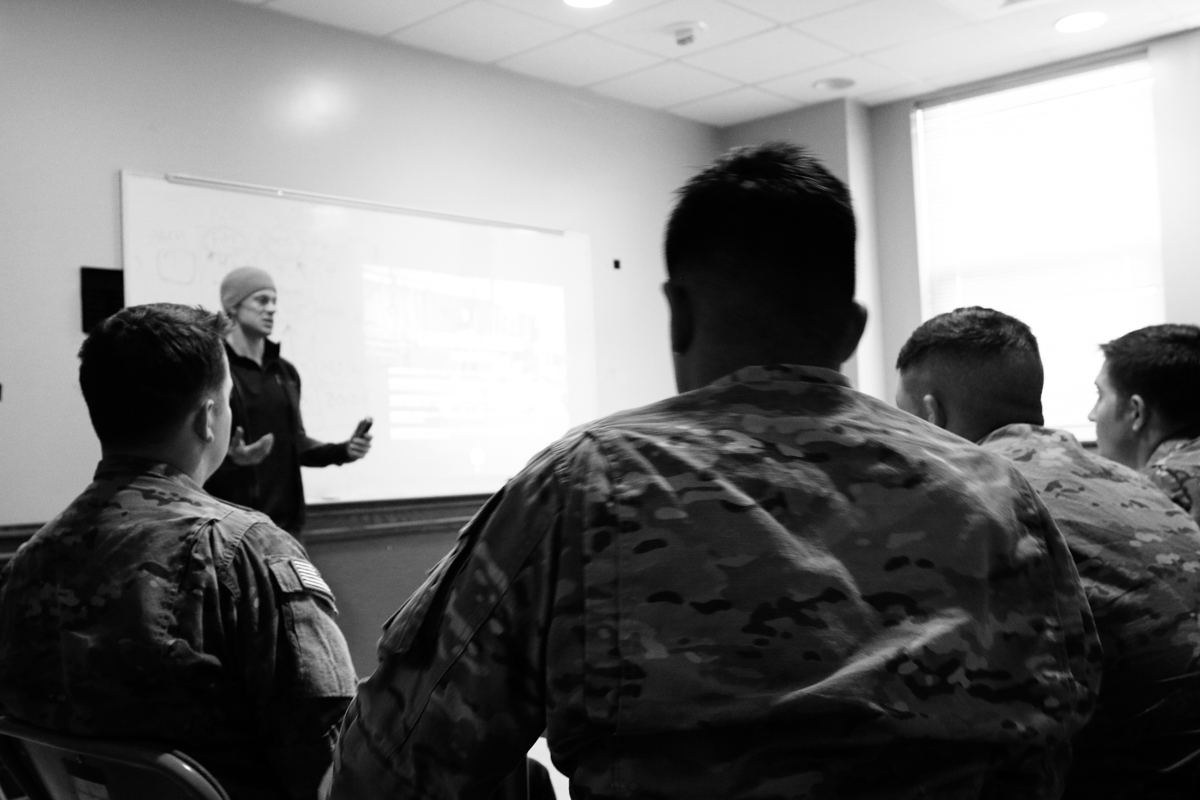 Adam Scott, MS, CSCS
Adam Scott, MS, CSCS
Last week MTI traveled to Fort Bragg, NC for seven days of coaching, research and education.
We kicked off the week with our Operator Ugly Fitness Assessment and concluded it with a two-day Advanced Programming Course (APC) at Southern Pines Crossfit. In-between we ran units through MTI unit PT instruction and educated them on our Unit/Squad PT program.
Our visit included training sessions with students from the US Army Special Forces Qualification Course, current US Army Special Operations soldiers, Cadre at the John F Kennedy Special Warfare Center and School, and a group of specialist from a Joint Special Operations group.
We also had the privilege of teaching military leadership, unit fitness coaches, law enforcement officers, civilians and fire/rescue fitness coaches.
Outside of a little ice, which robbed us of a training day, it was a great experience. Here are three of the lessons we learned from our week at Fort Bragg:
1. Support from the top is critical for growing a fitness culture.
Command support can include everything from money, to time, to training – but what it often boils down to is leading by example. It is one thing to give lip-service to fitness and it is another to make fitness training a command priority through action. Obviously, the units we worked with enjoyed a relatively high level of command support, however even they expressed frustration with PT time being poached for other rudimentary requirements.
On the bright side, a group of LE officers who attended our AP course shared a story about the changes they experienced when a fitness-focused commander took over. According to them, the commander simply began by articulating his priority on fitness and setting an example with his training. His next step was finding funds to educate his leaders and then make a modest, initial investment of $10k for equipment.
2. The definition of “fitness”, while still not job-specific, is moving in the right direction.
The idea of training job-specifically is still relatively novel to many of the tactical professions, but based on our experience in Fayetteville the pendulum is definitely shifting in the right direction. Most individuals seem to be altering their definition of fitness from the muscle-bound, six-pack magazine cover, to functional performance.
Facilities are also making progress. The old-school expensive, space-hogging pieces of bodybuilding equipment are harder and harder to come by. In their place we now find open training areas, lifting platforms, and ample pieces of functional training devices.
3. The two biggest hurdles to fitness are still education and access.
Although it was clear to me that progress is being made, there seemed to be two things that were holding groups and individuals back.
The first was education. Each time we teach a course we learn more about our athletes. Our goal is to continue churning our educational offerings to give every individual and unit the information they need to be successful.
In our experience, some individuals need the “why”, others the “what” and still others the “how.” Finding the right mix of the “why”, “what” and “how” has proven a little challenging, but we know it is critical to building the knowledge and confidence our fitness leaders need in order to keep moving their programs in the right direction.
Competence and confidence go hand-in-hand, especially in fitness. In our experience, the athletes and fitness leaders who are more educated and informed are able to bring the needed confidence to their fitness programs. They are more flexible and better able to adapt to the realities they faced. This definitely creates a better training experience and superior results for the athletes around them.
The second was access. Ft. Bragg had two new, large functional facilities. Both were great, but during peak hours (0600-0800, 1100-1300, 1600-1800) they were almost unusable.
We have worked hard on our austere programming theory and we absolutely believe that fitness can be accomplished with minimal access to equipment. However, greater access to training resources is definitely a positive – especially in garrison. The best PT plans are useless without the ability to execute them.
Units seemed to take one of three approaches to the obstacle of access: (1) Outfit their unit with its own reserve of minimal fitness equipment, (2) Reorganize schedules to allow PT during off-peak hours, (3) Avoid the hassle and stick to the status-quo.

